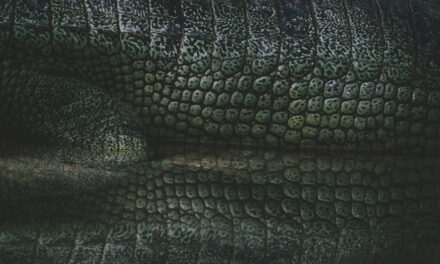Hyacinthe Rigaud was born on July 18, 1659, in Perpignan, a city in the south of France, which was then under Spanish rule. His family was of Catalan descent, and his father was a painter, which likely influenced Rigaud’s early interest in the arts. Growing up in a culturally rich environment, he was exposed to various artistic traditions that would later inform his own style.
At a young age, Rigaud demonstrated a remarkable talent for drawing, prompting his family to support his artistic ambitions. He began his formal education in art under the tutelage of the local painter, Claude Vignon, who recognised the young artist’s potential and encouraged him to pursue his studies further. Rigaud’s formative years were marked by a desire to refine his skills and expand his artistic knowledge.
He moved to Paris in 1674, where he enrolled at the prestigious Académie Royale de Peinture et de Sculpture. This institution was a hub for aspiring artists and provided Rigaud with access to esteemed mentors and a wealth of artistic resources. During his time at the academy, he honed his techniques in portraiture and developed a keen understanding of colour and composition.
His education laid the groundwork for his future success, as he absorbed the influences of contemporary artists while also cultivating his unique style.
Summary
- Hyacinthe Rigaud was born in Perpignan, France in 1659 and received his early education in art and painting in his hometown.
- Rigaud rose to prominence as a portrait painter in Paris, gaining the attention and patronage of the French royal court and aristocracy.
- His patronage by the French royal court led to numerous commissions, including the famous portrait of King Louis XIV.
- Rigaud’s style was characterized by his use of rich colours, intricate details, and a focus on capturing the personality and status of his subjects.
- Some of his notable works include the aforementioned portrait of King Louis XIV, as well as portraits of other members of the French royal family and prominent figures of the time.
Rise to Prominence
Portraits of Dignity and Grandeur
Rigaud’s portraits were not merely representations; they conveyed a sense of dignity and grandeur that resonated with the aspirations of the aristocracy. His early works showcased a blend of realism and idealism, which would become hallmarks of his style.
A Royal Commission
The turning point in Rigaud’s career came in 1683 when he painted a portrait of Louis XIV, the Sun King. This commission not only elevated his status but also solidified his reputation as one of the leading portraitists of the time. The painting, which depicted Louis XIV in elaborate regalia, exemplified Rigaud’s mastery of detail and his ability to convey power through art.
Rise to Prominence
The success of this portrait opened doors for Rigaud, leading to numerous commissions from members of the royal court and the aristocracy, further cementing his position in the upper echelons of French society.
Patronage by the French Royal Court
Rigaud’s relationship with the French royal court was pivotal in shaping his career and artistic legacy. Following his successful portrait of Louis XIV, he became the official portraitist for the king and received numerous commissions from other members of the royal family. This patronage not only provided him with financial stability but also allowed him to work on a grand scale, creating portraits that celebrated the power and prestige of the monarchy.
His association with the court elevated his status as an artist and positioned him as a key figure in the cultural landscape of France during the late 17th century. The royal court’s patronage also influenced Rigaud’s artistic choices. He embraced the opulence and grandeur associated with Baroque art, incorporating rich colours, intricate details, and dramatic poses into his portraits.
His works often featured elaborate costumes and luxurious fabrics, reflecting the wealth and status of his subjects. This emphasis on grandeur resonated with the ideals of absolutism that characterised Louis XIV’s reign, making Rigaud’s portraits not only personal likenesses but also statements of power and authority.
Style and Techniques
Rigaud’s artistic style is characterised by its meticulous attention to detail and its ability to convey both realism and idealism. He employed a technique known as chiaroscuro, which involves the use of strong contrasts between light and shadow to create a sense of depth and volume in his paintings. This technique allowed him to render textures with remarkable precision, whether it was the sheen of silk or the softness of skin.
His mastery of light not only enhanced the three-dimensional quality of his subjects but also imbued them with an emotional resonance that drew viewers into their world. In addition to chiaroscuro, Rigaud was known for his innovative use of colour. He often employed a rich palette that included deep reds, vibrant blues, and golden hues, which added a sense of vibrancy to his works.
His ability to blend colours seamlessly contributed to the lifelike quality of his portraits. Furthermore, Rigaud’s compositions were carefully constructed; he often placed his subjects against elaborate backgrounds that complemented their attire and status. This attention to detail extended to every aspect of his work, from the intricate lace on a collar to the delicate folds of fabric draping over a shoulder.
Notable Works
Among Rigaud’s most celebrated works is “Portrait of Louis XIV,” painted in 1701. This iconic portrait captures the king in all his regal splendour, adorned in an elaborate robe decorated with golden embroidery. The painting not only showcases Rigaud’s technical prowess but also serves as a powerful symbol of Louis XIV’s authority and divine right to rule.
The king’s confident pose and commanding gaze convey an air of majesty that has made this portrait one of the defining images of French monarchy. Another notable work is “Portrait of Philippe de Champaigne,” which exemplifies Rigaud’s ability to capture the essence of his subjects. In this painting, he portrays the artist Philippe de Champaigne with a sense of introspection and dignity.
The careful rendering of facial features and the subtle play of light create an intimate connection between the viewer and the subject. This work highlights Rigaud’s skill in portraying not just physical likeness but also character and emotion.
Influence on Baroque Art
Rigaud’s contributions to Baroque art are significant, particularly in the realm of portraiture. His ability to blend realism with idealism set a new standard for portrait painting during this period. Artists who followed him were inspired by his techniques and stylistic choices, leading to a shift in how portraits were conceived and executed.
Rigaud’s emphasis on grandeur and opulence became emblematic of Baroque aesthetics, influencing not only French artists but also those across Europe. Moreover, Rigaud’s portraits often served as templates for future generations of artists seeking to capture power dynamics through their work. His ability to convey authority through posture, attire, and expression became a model for subsequent portraitists who aimed to depict their subjects with similar gravitas.
The impact of Rigaud’s work can be seen in the portraits created by artists such as Antoine Watteau and Jean-Baptiste-Siméon Chardin, who drew inspiration from his techniques while infusing their own interpretations into their art.
Legacy and Impact
Hyacinthe Rigaud’s legacy is firmly entrenched in the annals of art history as one of the foremost portraitists of the Baroque era. His innovative techniques and distinctive style have left an indelible mark on portrait painting, influencing countless artists who followed in his footsteps. The grandeur and emotional depth present in his works continue to resonate with audiences today, serving as a testament to his artistic genius.
In addition to his technical contributions, Rigaud’s role as an official court painter helped elevate the status of portraiture within the broader context of fine art. His ability to navigate the complexities of royal patronage while maintaining artistic integrity set a precedent for future artists seeking similar opportunities. As such, Rigaud is often regarded as a bridge between traditional portraiture and modern interpretations that emerged in subsequent centuries.
Personal Life and Relationships
Rigaud’s personal life was marked by both professional success and personal challenges. He married Marie de la Faye in 1685, with whom he had several children. However, their marriage faced difficulties due to Rigaud’s demanding career and frequent absences from home as he pursued commissions from various patrons.
Despite these challenges, he maintained close relationships with fellow artists and intellectuals within Parisian society, fostering an environment that encouraged artistic exchange. Rigaud’s friendships with other prominent figures in the art world enriched his creative practice. He often engaged in discussions about art theory and technique with contemporaries such as Charles Le Brun and Nicolas Poussin.
These relationships not only influenced his artistic development but also contributed to a vibrant cultural milieu that characterised Paris during this period.
Reception and Criticism
Throughout his career, Rigaud received both acclaim and criticism for his work. While many praised his technical skill and ability to capture likenesses with remarkable accuracy, some critics argued that his portraits lacked emotional depth or originality. Detractors often pointed out that Rigaud’s adherence to traditional conventions could result in works that felt formulaic or overly reliant on established norms.
Despite these criticisms, Rigaud’s popularity among patrons ensured that he remained a sought-after artist throughout his life. His ability to navigate both praise and critique speaks to his resilience as an artist committed to refining his craft while responding to evolving tastes within the art world.
Rediscovery and Revival
In the centuries following Rigaud’s death in 1743, interest in his work waned as artistic movements shifted towards Neoclassicism and Romanticism. However, during the 19th century, there was a renewed appreciation for Baroque art, leading to a rediscovery of Rigaud’s contributions. Art historians began to recognise him as a pivotal figure within this movement, prompting exhibitions that showcased his works alongside those of other Baroque masters.
This revival not only highlighted Rigaud’s technical prowess but also recontextualised his work within contemporary discussions about power dynamics and representation in art. As scholars delved deeper into his oeuvre, they uncovered layers of meaning that resonated with modern audiences grappling with similar themes.
The Continuing Influence of Hyacinthe Rigaud
Today, Hyacinthe Rigaud’s influence can be seen across various artistic disciplines beyond traditional portraiture. His techniques have been studied by artists seeking to master chiaroscuro and colour theory, while his compositions continue to inspire contemporary painters exploring themes of identity and power dynamics. Moreover, exhibitions dedicated to Baroque art often feature Rigaud prominently, ensuring that new generations are introduced to his remarkable contributions.
In an era where representation remains a critical topic within art discourse, Rigaud’s ability to convey authority through visual means serves as a powerful reminder of art’s capacity to shape perceptions of identity and status. As artists continue to grapple with these themes today, they draw upon Rigaud’s legacy as both inspiration and cautionary tale—reminding us that while techniques may evolve, the fundamental questions surrounding representation remain ever relevant.
For those interested in exploring advanced techniques in art, a related article worth checking out is Advanced Glazing Techniques for Depth and Luminosity. This article delves into the intricate process of layering translucent glazes to create depth and luminosity in paintings, a technique that artists like Hyacinthe Rigaud may have employed in their works. By understanding and mastering these techniques, artists can enhance the visual impact of their artwork and create stunning effects that captivate viewers.


